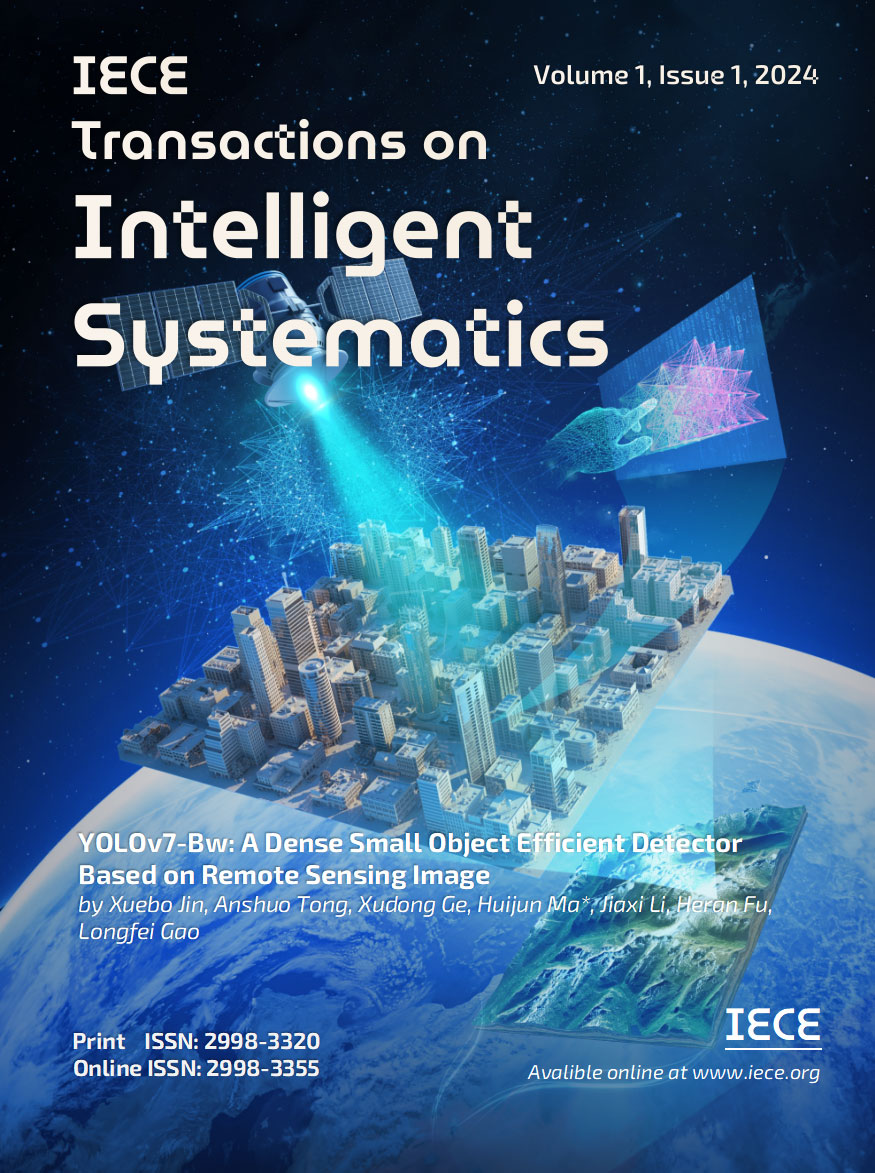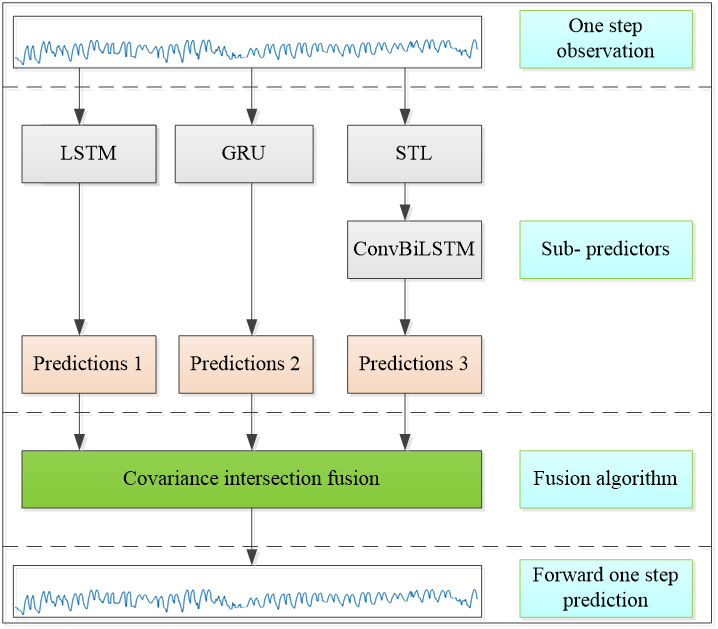IECE Transactions on Intelligent Systematics
ISSN: 2998-3355 (Online) | ISSN: 2998-3320 (Print)
Email: [email protected]


 Submit Manuscript
Edit a Special Issue
Submit Manuscript
Edit a Special Issue

[1]Zhang, G. P. (2003). Time series forecasting using a hybrid ARIMA and neural network model. Neurocomputing, 50, 159-175.
[2]Thissen, U. V. B. R., Van Brakel, R., De Weijer, A. P., Melssen, W. J., & Buydens, L. M. C. (2003). Using support vector machines for time series prediction. Chemometrics and intelligent laboratory systems, 69(1-2), 35-49.
[3]Tay, F. E., & Cao, L. (2001). Application of support vector machines in financial time series forecasting. omega, 29(4), 309-317.
[4]Mikolov, T., Karafiát, M., Burget, L., Cernocký, J., & Khudanpur, S. (2010, September). Recurrent neural network based language model. In Interspeech (Vol. 2, No. 3, pp. 1045-1048).
[5]Mikolov, T., Kombrink, S., Burget, L., Černocký, J., & Khudanpur, S. (2011, May). Extensions of recurrent neural network language model. In 2011 IEEE international conference on acoustics, speech and signal processing (ICASSP) (pp. 5528-5531). IEEE.
[6]Connor, J. T., Martin, R. D., & Atlas, L. E. (1994). Recurrent neural networks and robust time series prediction. IEEE transactions on neural networks, 5(2), 240-254.
[7]Gers, F. A., Schmidhuber, J., & Cummins, F. (2000). Learning to forget: Continual prediction with LSTM. Neural computation, 12(10), 2451-2471.
[8]Fu, R., Zhang, Z., & Li, L. (2016, November). Using LSTM and GRU neural network methods for traffic flow prediction. In 2016 31st Youth academic annual conference of Chinese association of automation (YAC) (pp. 324-328). IEEE.
[9]Malhotra, P., Vig, L., Shroff, G., & Agarwal, P. (2015, April). Long Short Term Memory Networks for Anomaly Detection in Time Series. In Esann (Vol. 2015, p. 89).
[10]Che, Z., Purushotham, S., Cho, K., Sontag, D., & Liu, Y. (2018). Recurrent neural networks for multivariate time series with missing values. Scientific reports, 8(1), 6085.
[11]Yao, S., Hu, S., Zhao, Y., Zhang, A., & Abdelzaher, T. (2017, April). Deepsense: A unified deep learning framework for time-series mobile sensing data processing. In Proceedings of the 26th international conference on world wide web (pp. 351-360).
[12]Osogami, T., Kajino, H., & Sekiyama, T. (2017, July). Bidirectional learning for time-series models with hidden units. In International Conference on Machine Learning (pp. 2711-2720). PMLR.
[13]Wu, Y., & Tan, H. (2016). Short-term traffic flow forecasting with spatial-temporal correlation in a hybrid deep learning framework. arXiv preprint arXiv:1612.01022.
[14]Liu, Y., Zheng, H., Feng, X., & Chen, Z. (2017, October). Short-term traffic flow prediction with Conv-LSTM. In 2017 9th international conference on wireless communications and signal processing (WCSP) (pp. 1-6). IEEE.
[15]Du, S., Li, T., Yang, Y., & Horng, S. J. (2019). Deep air quality forecasting using hybrid deep learning framework. IEEE Transactions on Knowledge and Data Engineering, 33(6), 2412-2424.
[16]Kim, S., Hong, S., Joh, M., & Song, S. K. (2017). Deeprain: Convlstm network for precipitation prediction using multichannel radar data. arXiv preprint arXiv:1711.02316.
[17]Garcia, F., Mirbach, B., Ottersten, B., Grandidier, F., & Cuesta, A. (2010, September). Pixel weighted average strategy for depth sensor data fusion. In 2010 IEEE International Conference on Image Processing (pp. 2805-2808). IEEE.
[18]Rojo, J., Rivero, R., Romero-Morte, J., Fernández-González, F., & Pérez-Badia, R. (2017). Modeling pollen time series using seasonal-trend decomposition procedure based on LOESS smoothing. International journal of biometeorology, 61, 335-348.
[19]Li, S., Kwok, J. T., & Wang, Y. (2002). Multifocus image fusion using artificial neural networks. Pattern recognition letters, 23(8), 985-997.
[20]Qiu, X., Ren, Y., Suganthan, P. N., & Amaratunga, G. A. (2017). Empirical mode decomposition based ensemble deep learning for load demand time series forecasting. Applied soft computing, 54, 246-255.
[21]Pu, L., Feng, X., & Hou, Z. (2019, May). Covariance intersection fusion for visual tracking with hierarchical features. In Tenth International Conference on Graphics and Image Processing (ICGIP 2018) (Vol. 11069, pp. 1158-1166). SPIE.
[22]Niehsen, W. (2002, July). Information fusion based on fast covariance intersection filtering. In Proceedings of the Fifth International Conference on Information Fusion. FUSION 2002.(IEEE Cat. No. 02EX5997) (Vol. 2, pp. 901-904). IEEE.
[23]Hurley, M. B. (2002, July). An information theoretic justification for covariance intersection and its generalization. In Proceedings of the fifth international conference on Information Fusion. FUSION 2002.(IEEE Cat. No. 02EX5997) (Vol. 1, pp. 505-511). IEEE.
[24]Julier, S., & Uhlmann, J. K. (2017). General decentralized data fusion with covariance intersection. In Handbook of multisensor data fusion (pp. 339-364). CRC Press.
[25]Gupta, M., & Gupta, B. (2018, August). An ensemble model for breast cancer prediction using sequential least squares programming method (slsqp). In 2018 eleventh international conference on contemporary computing (IC3) (pp. 1-3). IEEE.
IECE Transactions on Intelligent Systematics
ISSN: 2998-3355 (Online) | ISSN: 2998-3320 (Print)
Email: [email protected]

Portico
All published articles are preserved here permanently:
https://www.portico.org/publishers/iece/